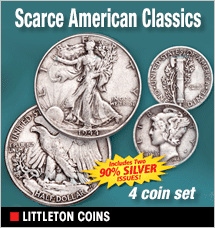
The War of the Worlds (1953) is a movie fondly recalled by many sci-fi fans. The special effects of the day are intriguing, and especially interesting is a look at the famed Northrup Flying Wing, which did not survive the imaginative era in which it was designed and manufactured.
Probably most know by now the story had its origins in the H.G. Wells novel published in the 1890s. The famous radio broadcast of October 30, 1938 that caused a nationwide panic is often called the "Martian Hoax," but it was never a hoax. It was creative drama, using the new medium of radio at its most imaginative. Orson Welles' version took the novel and turned it into first-person experience (at least the first half of the show. The second half returns to traditional narrative storytelling).
At the start of this famous radio broadcast, there were the standard announcements inviting listeners to stay tuned for "The War of the Worlds," on the Mercury Theater on CBS and several normal commercial breaks. The well-publicized panic of listeners to the program actually came from people who had turned the dial late to listen to the program only after it had already begun.
They had been listening to the Chase and Sanborn Hour with Edgar Bergen and Charlie McCarthy over on NBC. When the first commercial came on, they then "channel surfed" over to CBS. By that time, the "The War of the Worlds" program had already started and these late-comers joined the program already in progress to hear screaming announcers describing what sounded like the end of the world.
That September, the public had already gotten primed for horror by weeks of radio bulletins on the Sudetenland crisis in Europe when it looked like Hitler was going to start a war. That horror was postponed for another year. By October, radio listeners were on tenterhooks every time they turned on the radio, expecting ever more tense bulletins by Edward R. Murrow, H.V. Kaltenborn, Bob Trout, or William L. Shirer.
By the time Orson Welles took to the microphone, an actor pretending to be a frantic reporter describing the devastation of New Jersey was just the thing to put a lot of listeners over the edge.
The movie The War of the Worlds (1953) was made in a different era, a bit more sophisticated (as the film points out, we had developed the atom bomb in the meantime), but this film still reeks of a warm innocence. Gene Barry plays a scientist on vacation near the town where the Martians land. Ann Robinson is a young teacher who spends the rest of the movie either in his arms or running away from the Martians.
We are shown a lot of good-natured yokels who investigate and cheerfully holler, "Welcome to California," wanting to make peace with the alien invaders. These may be square-dancing type folk, but they've been around. They know that Martians visit occasionally, "Happens every 18 or 20 years, they say." (A nod to the famous radio broadcast.) Best to stay on the Martians' good side, they think. Then some of them get evaporated in a heat ray. Talk about a rude guest.
The military tries to stop the invasion. We get rocket launchers, bazookas, tanks, and that spectacular Flying Wing, but the outer space creatures are immune to shellfire. They are not, however, immune to human germs, and so we all know how it ends for our Martians.
Just as Orson Welles' version was set in his time in the late 1930s and reflected it by use of the radio, and just as author H.G. Wells' original story reflected London of the 1890s, so too, this movie gives us a glimpse of the early 1950s, our innocence as well as our sophistication, our atom bomb and the electronic Martian "eye" that is described "like a television camera." We are in the Cold War, and we snuggle up to the A-bomb to protect us from the strangers. Better the devil you know.
Now we are more wise. We have learned through the novel, the radio show, and the movie that if you ever see a Martian invading your backyard this Halloween, just cough on him. Spread those germs.
Jacqueline T. Lynch is the author of Ann Blyth: Actress. Singer. Star. and Movies in Our Time: Hollywood Mirrors and Mimics the Twentieth Century, available online at Amazon, CreateSpace, and the author. Website: www.JacquelineTLynch.com.



























































